-
 Bitcoin
Bitcoin $99,594.2189
-3.59% -
 Ethereum
Ethereum $2,188.5793
-9.00% -
 Tether USDt
Tether USDt $1.0001
-0.02% -
 XRP
XRP $1.9745
-5.82% -
 BNB
BNB $608.9511
-3.73% -
 Solana
Solana $130.4575
-5.93% -
 USDC
USDC $1.0000
0.01% -
 TRON
TRON $0.2637
-3.59% -
 Dogecoin
Dogecoin $0.1493
-5.97% -
 Cardano
Cardano $0.5322
-6.72% -
 Hyperliquid
Hyperliquid $33.9044
3.33% -
 Bitcoin Cash
Bitcoin Cash $449.6411
-5.46% -
 UNUS SED LEO
UNUS SED LEO $8.9629
0.43% -
 Sui
Sui $2.3943
-8.35% -
 Chainlink
Chainlink $11.4402
-7.83% -
 Stellar
Stellar $0.2241
-6.49% -
 Avalanche
Avalanche $16.1489
-4.24% -
 Toncoin
Toncoin $2.7182
-5.94% -
 Shiba Inu
Shiba Inu $0.0...01040
-5.72% -
 Litecoin
Litecoin $78.7882
-4.07% -
 Ethena USDe
Ethena USDe $1.0004
-0.01% -
 Hedera
Hedera $0.1305
-7.45% -
 Monero
Monero $297.0030
-5.32% -
 Dai
Dai $0.9997
-0.02% -
 Polkadot
Polkadot $3.1834
-6.03% -
 Bitget Token
Bitget Token $3.9788
-7.03% -
 Uniswap
Uniswap $6.1327
-10.62% -
 Pepe
Pepe $0.0...08689
-8.30% -
 Pi
Pi $0.4826
-9.65% -
 Aave
Aave $219.8043
-9.69%
How to determine the BOLL long and short boundaries? The gains and losses of the middle track determine the direction
Bollinger Bands help traders identify entry/exit points in crypto markets by analyzing volatility and middle band trends for potential long and short signals.
May 27, 2025 at 01:28 am
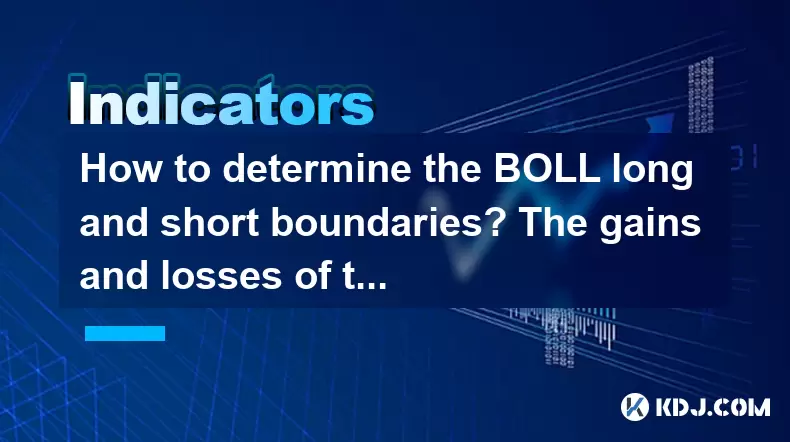
Determining the Bollinger Bands (BOLL) long and short boundaries, and understanding how the gains and losses of the middle track can influence the direction of a cryptocurrency, are crucial aspects of technical analysis. Bollinger Bands are a versatile tool that can help traders identify potential entry and exit points based on market volatility. In this article, we will explore the components of Bollinger Bands, how to set them up, and how to interpret the middle track's movements to determine market direction.
Understanding Bollinger Bands
Bollinger Bands consist of three lines: the middle band, the upper band, and the lower band. The middle band is typically a simple moving average (SMA) of the closing prices over a specified period, commonly set to 20 days. The upper and lower bands are calculated by adding and subtracting a multiple of the standard deviation from the middle band, usually set to two standard deviations.
The standard deviation measures the volatility of the price. When the price is highly volatile, the bands widen, and when the price is less volatile, the bands contract. This dynamic nature of Bollinger Bands makes them useful for identifying overbought and oversold conditions in the market.
Setting Up Bollinger Bands
To set up Bollinger Bands on a cryptocurrency chart, follow these steps:
- Choose a trading platform or charting tool that supports technical indicators, such as TradingView, Binance, or Coinbase.
- Select the cryptocurrency pair you want to analyze.
- Add the Bollinger Bands indicator to your chart. This can usually be done by searching for "Bollinger Bands" in the indicator menu and adding it to the chart.
- Configure the settings for the Bollinger Bands. The default settings are often a 20-day SMA for the middle band and two standard deviations for the upper and lower bands. You can adjust these settings based on your trading strategy and the cryptocurrency's volatility.
Interpreting the Middle Band
The middle band of the Bollinger Bands is a critical component as it represents the average price over the specified period. The direction of the middle band can provide insights into the overall trend of the cryptocurrency.
- If the middle band is trending upwards, it suggests that the cryptocurrency is in an uptrend, and traders may look for opportunities to buy.
- If the middle band is trending downwards, it indicates a downtrend, and traders may consider selling or shorting the cryptocurrency.
- A flat middle band suggests a period of consolidation, where the price is moving sideways, and traders may wait for a breakout before making a decision.
Determining Long and Short Boundaries
The upper and lower bands of the Bollinger Bands can help traders determine potential long and short boundaries. Here's how to interpret these boundaries:
- The upper band represents a potential resistance level. If the price touches or exceeds the upper band, it may indicate that the cryptocurrency is overbought, and a price correction could be imminent. Traders might consider selling or taking profits at this level.
- The lower band represents a potential support level. If the price touches or falls below the lower band, it may suggest that the cryptocurrency is oversold, and a price rebound could be expected. Traders might consider buying at this level.
Gains and Losses of the Middle Track
The gains and losses of the middle track, or the middle band, can further refine the direction of the cryptocurrency. Monitoring the price movements relative to the middle band can provide additional signals for trading decisions.
- If the price consistently stays above the middle band, it reinforces the bullish trend, and traders may look for opportunities to buy on pullbacks to the middle band.
- If the price consistently stays below the middle band, it reinforces the bearish trend, and traders may look for opportunities to sell on rallies to the middle band.
- Crossing the middle band can also be a significant signal. A price crossing from below to above the middle band can indicate a potential shift from a bearish to a bullish trend. Conversely, a price crossing from above to below the middle band can signal a potential shift from a bullish to a bearish trend.
Combining Bollinger Bands with Other Indicators
While Bollinger Bands can be a powerful tool on their own, combining them with other technical indicators can enhance their effectiveness. Some popular indicators to use in conjunction with Bollinger Bands include:
- Relative Strength Index (RSI): The RSI can help confirm overbought and oversold conditions indicated by the Bollinger Bands. If the price touches the upper band and the RSI is above 70, it strengthens the overbought signal. Similarly, if the price touches the lower band and the RSI is below 30, it reinforces the oversold signal.
- Moving Average Convergence Divergence (MACD): The MACD can help identify the momentum of the price movements. If the MACD line crosses above the signal line while the price is near the lower band, it may indicate a strong buying opportunity. Conversely, if the MACD line crosses below the signal line while the price is near the upper band, it may suggest a strong selling opportunity.
- Volume: Monitoring trading volume can provide insights into the strength of price movements. If the price breaks out of the upper or lower band with high volume, it suggests a more significant move, and traders may have more confidence in the signal.
Practical Example of Using Bollinger Bands
To illustrate how to use Bollinger Bands in a real trading scenario, let's consider a hypothetical example with Bitcoin (BTC):
- Step 1: Add the Bollinger Bands to the BTC/USD chart with the default settings of a 20-day SMA and two standard deviations.
- Step 2: Observe the direction of the middle band. If it's trending upwards, it suggests a bullish trend for Bitcoin.
- Step 3: Look for the price touching the lower band. If the price touches the lower band and the middle band is still trending upwards, it may indicate a buying opportunity.
- Step 4: Confirm the signal with other indicators. For example, if the RSI is below 30, it reinforces the oversold condition, and the MACD line crosses above the signal line, it suggests increasing momentum.
- Step 5: Enter a long position at the lower band, setting a stop-loss just below the lower band to manage risk.
- Step 6: Monitor the price as it moves towards the upper band. If the price touches the upper band and the RSI is above 70, it may suggest a selling opportunity.
- Step 7: Exit the long position at the upper band, taking profits and potentially entering a short position if other indicators confirm a bearish signal.
Frequently Asked Questions
Q: Can Bollinger Bands be used for all cryptocurrencies?
A: Yes, Bollinger Bands can be applied to any cryptocurrency pair. However, the effectiveness of the indicator may vary depending on the liquidity and volatility of the specific cryptocurrency. More liquid and widely traded cryptocurrencies like Bitcoin and Ethereum may provide more reliable signals.
Q: How often should I adjust the settings of the Bollinger Bands?
A: The default settings of a 20-day SMA and two standard deviations are widely used and can be effective for most cryptocurrencies. However, you may need to adjust these settings based on the specific volatility and trading patterns of the cryptocurrency you are analyzing. It's a good practice to test different settings on historical data to find the most suitable parameters for your trading strategy.
Q: What are the limitations of using Bollinger Bands?
A: While Bollinger Bands are a powerful tool, they have some limitations. They are based on historical data and may not always predict future price movements accurately. Additionally, during periods of low volatility, the bands may remain narrow for extended periods, leading to false signals. It's essential to use Bollinger Bands in conjunction with other indicators and to consider the broader market context.
Q: Can Bollinger Bands be used for day trading and swing trading?
A: Yes, Bollinger Bands can be used for both day trading and swing trading. For day trading, you may need to use shorter time frames and adjust the settings of the Bollinger Bands accordingly. For swing trading, longer time frames and the default settings may be more suitable. The key is to align the settings and time frame with your trading strategy and goals.
Disclaimer:info@kdj.com
The information provided is not trading advice. kdj.com does not assume any responsibility for any investments made based on the information provided in this article. Cryptocurrencies are highly volatile and it is highly recommended that you invest with caution after thorough research!
If you believe that the content used on this website infringes your copyright, please contact us immediately (info@kdj.com) and we will delete it promptly.
- Altcoins Under Pressure: Cardano and XRP Face Critical Tests
- 2025-06-23 12:25:12
- Rare Coin Fever in Wiltshire: Auctions, Errors, and Olympic Gold!
- 2025-06-23 12:25:12
- XRP Price Under Pressure: War Fears and Market Sentiment
- 2025-06-23 12:30:12
- HAI Token Private Key Leak: What Happened and How to Stay Safe
- 2025-06-23 12:45:12
- Texas Goes All In: Bitcoin Reserve Signals Big State Embrace
- 2025-06-23 12:45:12
- Pi Network's Price Plunge: Crash, Scammer Accusations, and What's Next?
- 2025-06-23 13:05:12
Related knowledge
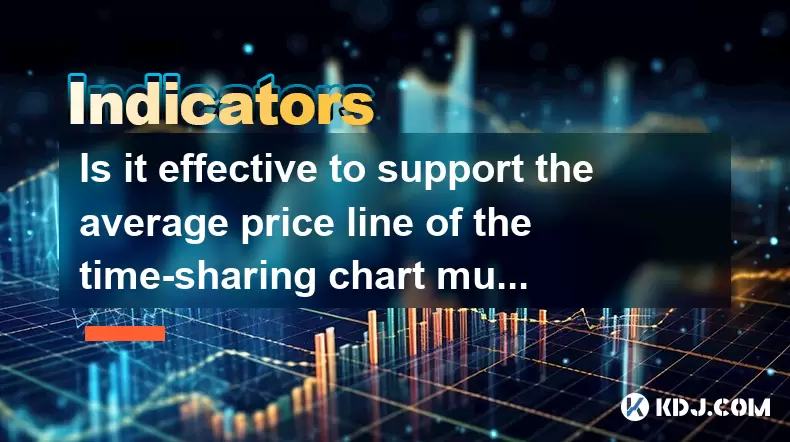
Is it effective to support the average price line of the time-sharing chart multiple times?
Jun 23,2025 at 01:36pm
Understanding the Average Price Line in Time-Sharing ChartsIn cryptocurrency trading, time-sharing charts refer to real-time price charts that display price movements over short intervals, often within a single trading day. Within these charts, the average price line, also known as the Volume Weighted Average Price (VWAP), is a commonly used technical i...
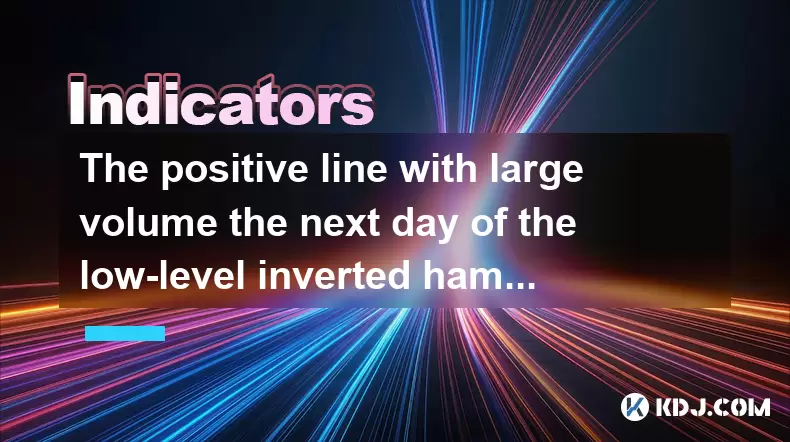
The positive line with large volume the next day of the low-level inverted hammer line confirms the reversal?
Jun 23,2025 at 01:21pm
Understanding the Low-Level Inverted Hammer LineThe inverted hammer line is a single candlestick pattern that typically appears at the end of a downtrend. It has a small real body near the bottom of the trading range and a long upper shadow, indicating that bulls attempted to push prices higher but were met with selling pressure. When this pattern forms...
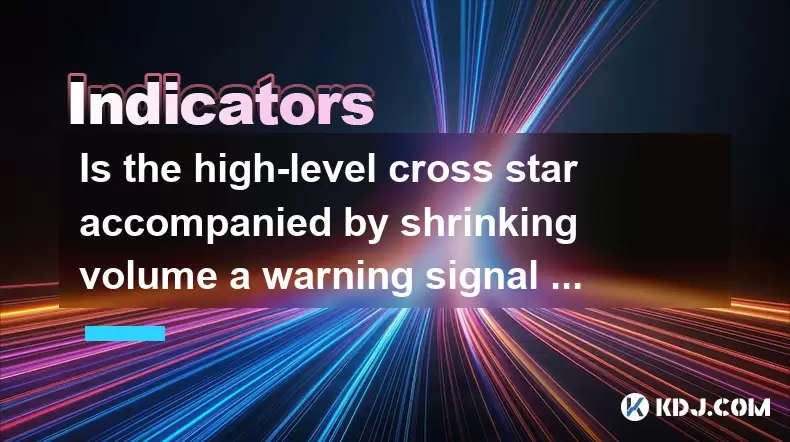
Is the high-level cross star accompanied by shrinking volume a warning signal of peaking?
Jun 23,2025 at 01:28pm
Understanding High-Level Cross Star PatternsIn the world of cryptocurrency trading, candlestick patterns are essential tools for technical analysis. One such pattern is the high-level cross star, which appears as a doji or near-doji candle at a significant resistance level. This pattern often indicates indecision in the market and can be interpreted as ...
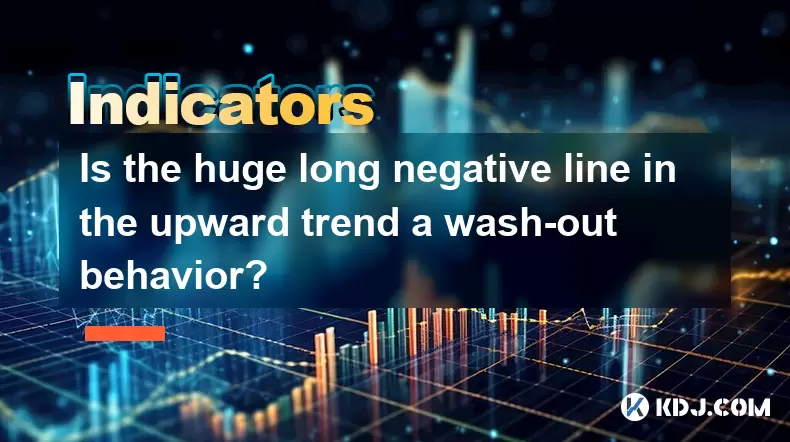
Is the huge long negative line in the upward trend a wash-out behavior?
Jun 23,2025 at 12:49pm
Understanding the Long Negative Candlestick in an Uprising TrendA long negative candlestick, often referred to as a long red or bearish candle, appearing during an upward trend can raise concerns among traders and investors. This pattern typically indicates a sudden and significant drop in price after a period of rising prices. It is often interpreted a...

Can the EXPMA golden cross stand on the 5-day line at the same time?
Jun 23,2025 at 11:42am
Understanding the EXPMA Indicator in Cryptocurrency TradingThe Exponential Moving Average (EXPMA) is a popular technical analysis tool used by cryptocurrency traders to identify trends and potential reversal points. Unlike simple moving averages, the EXPMA gives more weight to recent price data, making it more responsive to current market conditions. In...

Does the second surge in the RSI overbought zone induce more?
Jun 22,2025 at 08:35am
Understanding the RSI Overbought ZoneThe Relative Strength Index (RSI) is a momentum oscillator commonly used in technical analysis to measure the speed and change of price movements. It ranges from 0 to 100, with values above 70 typically considered overbought and values below 30 considered oversold. When the RSI enters the overbought zone for the firs...

Is it effective to support the average price line of the time-sharing chart multiple times?
Jun 23,2025 at 01:36pm
Understanding the Average Price Line in Time-Sharing ChartsIn cryptocurrency trading, time-sharing charts refer to real-time price charts that display price movements over short intervals, often within a single trading day. Within these charts, the average price line, also known as the Volume Weighted Average Price (VWAP), is a commonly used technical i...

The positive line with large volume the next day of the low-level inverted hammer line confirms the reversal?
Jun 23,2025 at 01:21pm
Understanding the Low-Level Inverted Hammer LineThe inverted hammer line is a single candlestick pattern that typically appears at the end of a downtrend. It has a small real body near the bottom of the trading range and a long upper shadow, indicating that bulls attempted to push prices higher but were met with selling pressure. When this pattern forms...

Is the high-level cross star accompanied by shrinking volume a warning signal of peaking?
Jun 23,2025 at 01:28pm
Understanding High-Level Cross Star PatternsIn the world of cryptocurrency trading, candlestick patterns are essential tools for technical analysis. One such pattern is the high-level cross star, which appears as a doji or near-doji candle at a significant resistance level. This pattern often indicates indecision in the market and can be interpreted as ...

Is the huge long negative line in the upward trend a wash-out behavior?
Jun 23,2025 at 12:49pm
Understanding the Long Negative Candlestick in an Uprising TrendA long negative candlestick, often referred to as a long red or bearish candle, appearing during an upward trend can raise concerns among traders and investors. This pattern typically indicates a sudden and significant drop in price after a period of rising prices. It is often interpreted a...

Can the EXPMA golden cross stand on the 5-day line at the same time?
Jun 23,2025 at 11:42am
Understanding the EXPMA Indicator in Cryptocurrency TradingThe Exponential Moving Average (EXPMA) is a popular technical analysis tool used by cryptocurrency traders to identify trends and potential reversal points. Unlike simple moving averages, the EXPMA gives more weight to recent price data, making it more responsive to current market conditions. In...

Does the second surge in the RSI overbought zone induce more?
Jun 22,2025 at 08:35am
Understanding the RSI Overbought ZoneThe Relative Strength Index (RSI) is a momentum oscillator commonly used in technical analysis to measure the speed and change of price movements. It ranges from 0 to 100, with values above 70 typically considered overbought and values below 30 considered oversold. When the RSI enters the overbought zone for the firs...
See all articles

























































































